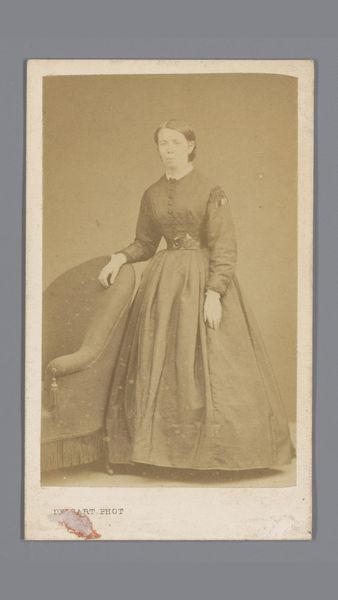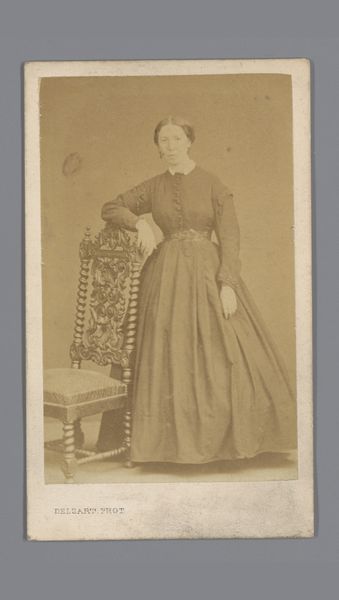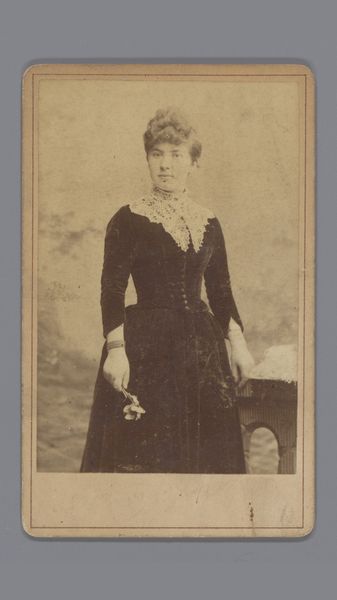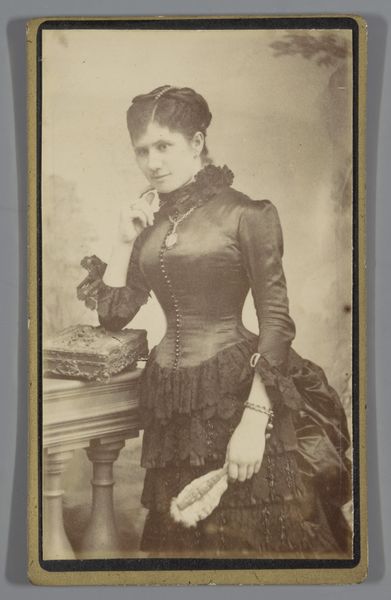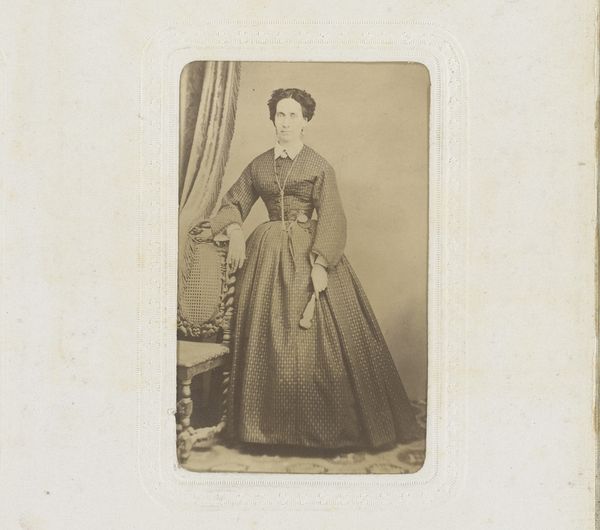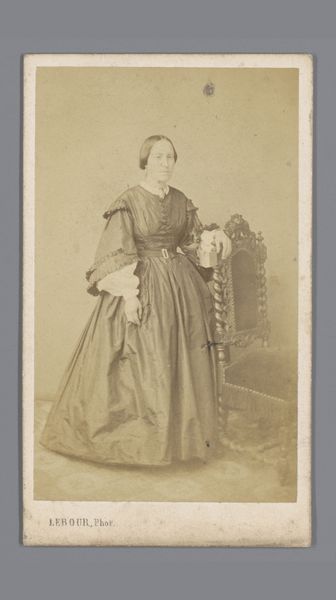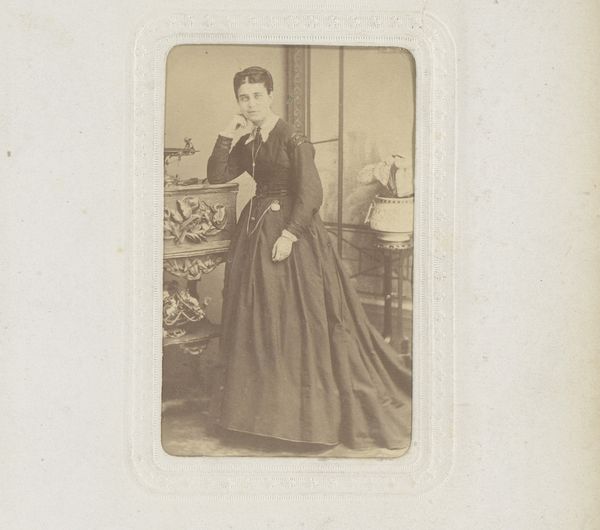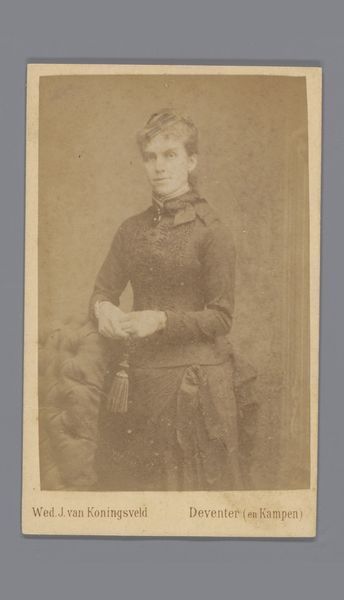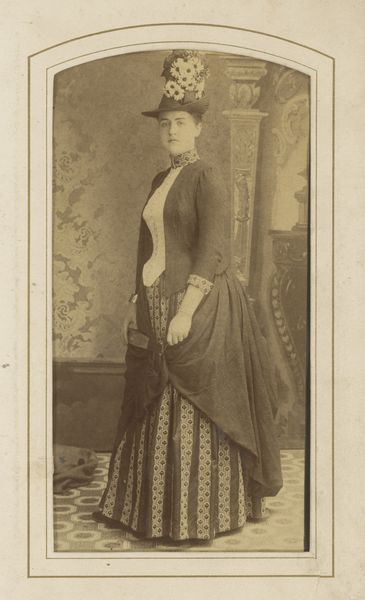
photography
#
portrait
#
16_19th-century
#
charcoal drawing
#
photography
#
19th century
#
genre-painting
#
academic-art
#
realism
Dimensions: height 180 mm, width 91 mm
Copyright: Rijks Museum: Open Domain
Editor: Here we have a photograph, "Portret van een staande vrouw in zwarte japon", taken sometime between 1870 and 1890. I’m immediately struck by its formality, and how posed it all feels, from the woman’s dress to her posture. What can you tell me about the historical context that might explain this? Curator: That formality is absolutely key. The late 19th century saw photography solidify its place in society, particularly for portraiture. Before this, painted portraits were the domain of the wealthy. Photography offered a relatively more accessible way to record likeness, democratizing representation, in a way. Consider who would be commissioning such a photograph and why? Editor: Presumably, it’s a status symbol. But her dress looks quite somber… Is black unusual for this time? Curator: Black became increasingly fashionable throughout the 19th century, driven partly by Queen Victoria's prolonged mourning for Prince Albert. However, the photograph's composition also conforms to certain expectations: controlled, posed, demonstrating a degree of social decorum. Even the prop she’s leaning on – that neoclassical pedestal - speaks to aspirations of class and cultivation. Editor: So, even the seemingly minor details were carefully considered as a social statement? Curator: Exactly! Photography in this era served to construct and reinforce social identity. But what's also important to think about, how photographs, once circulated publicly and privately, influence public perception on beauty standards of this period? Do you find yourself comparing it to painting from this same period? Editor: That's a great point. I guess I’d assumed the formality was simply how things *were,* but now I see the performative aspect of it all. Curator: Indeed! Thinking about the agency of the subject and the photographer within those social conventions opens up really interesting avenues for interpretation. Editor: It really shifts my perspective, thinking about how photography was shaping ideas of class and beauty back then. Thank you for pointing out all these rich details.
Comments
No comments
Be the first to comment and join the conversation on the ultimate creative platform.
